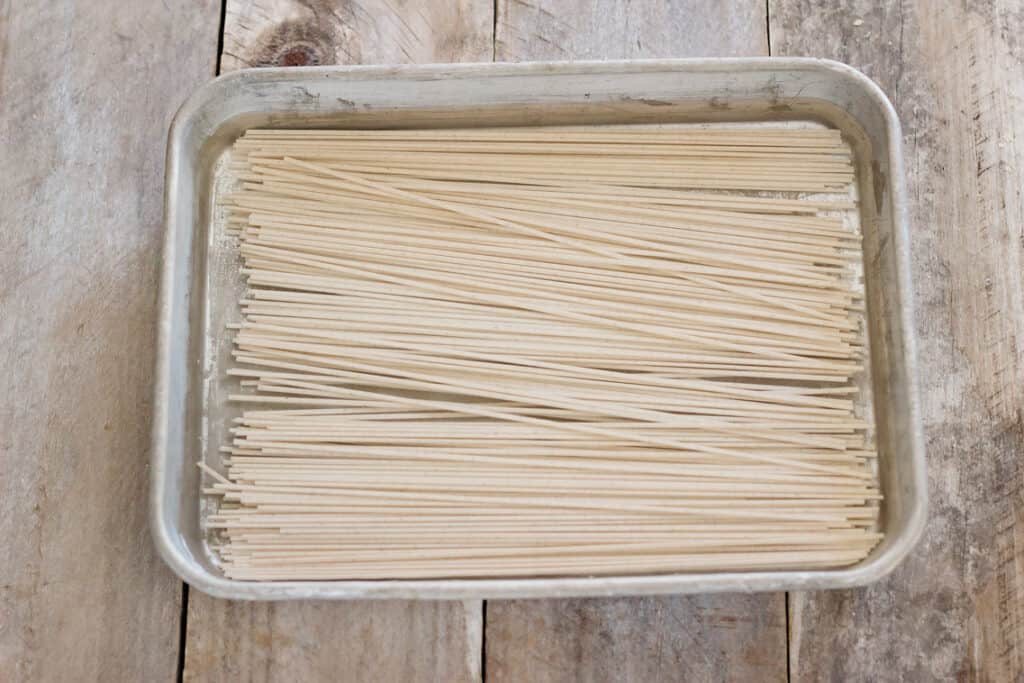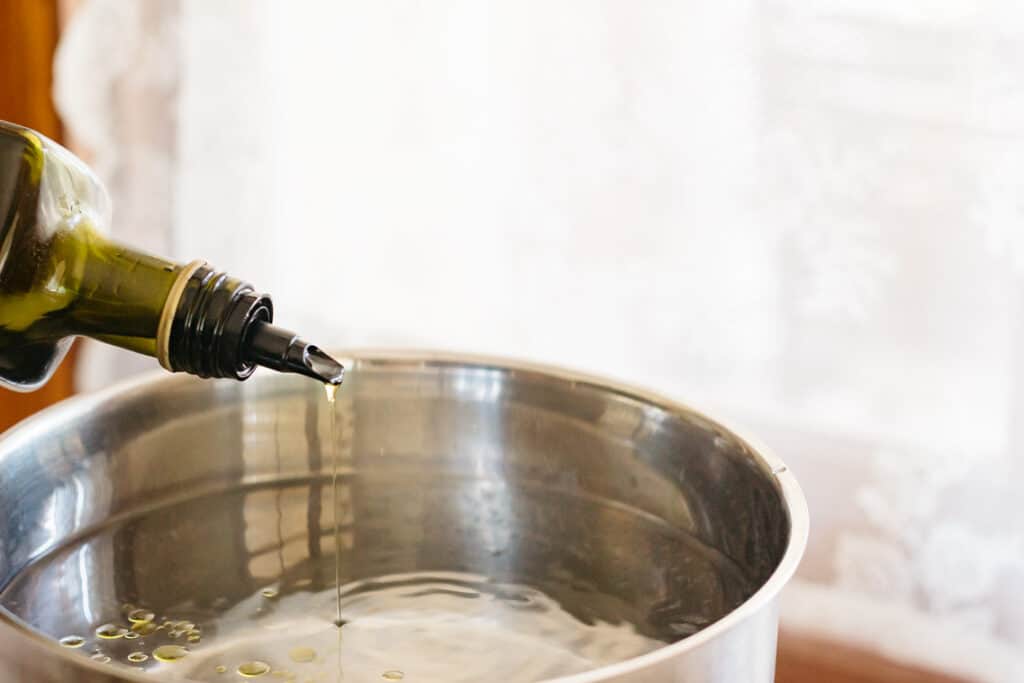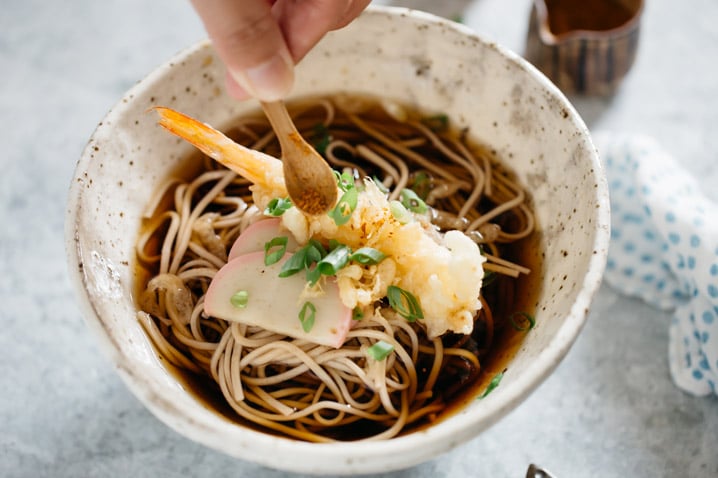Soba noodles are another popular Japanese noodle. Discover what it is, the types of soba noodles, and how to cook it perfectly like a pro. You might wish to store your noodles, so I explain how, and give a list of recipes using soba noodles!


What is Soba Noodle?
Soba is a type of Japanese noodle made from buckwheat flour so it has a light brownish colour with speckles. It is a popular type of noodle because it has an earthy nutty flavour with health benefits. When Japanese say “Soba” they are referring to this buckwheat noodle. It is different from Yaki Soba even though it has the word “soba”. “Soba” can mean noodle and Yaki soba is fried (yaki) egg noodle. So they are different.

Not All Soba Noodles Are The Same
Back wheat does not form gluten so it is difficult to make this noodle which does not break easily. So, often wheat flour is added to make soba noodle and their names depend on how much wheat flour is added. Jyuwari(100%), hachi wari(80%) etc.

Where to Buy Soba Noodles From?
Soba comes in dried, or frozen form from Japaneses or Asian grocery stores, or you can get Dried Buckwheat Noodles from online stores and supermarkets.
The Best Way to Cook Dried Noodles at Home
When these noodles are dried, they lose the nutty and earthy aroma and flavour. But the great news is that you can make dried noodles just like freshly made soba noodles as you would have at a Japanese soba noodle speciality shop. The difference between freshly made and dried is the amount of moisture. So before you cook it, soak dried noodles in water and let the noodles absorb the moisture. That also will make the cooking time shorter. Further, add vegetable oil not just to make the noodles glossy but the starch of the noodle combines with the oil to make it smooth. Read below for 5 tips and tricks.

5 Tips & Tricks
- Soak the dried soba noodles in water for 15 minutes
- Use the largest pot as possible to cook the noodles.
- Add vegetable oil to the water as it makes the noodles glossy and smoother.
- Cook in shorter time because the dried noodles are already pre-soaked in water.
- Wash the cooked noodle immediately under running water to remove sliminess.

How Are Soba Noodles Used in Japanese Cooking?
Soba is used in many different ways in Japanese cooking, cold or warm.
Zaru soba – is a cold soba noodle served on a bamboo tray called “Zaru” in Japanese. It is garnished with shredded nori seaweed, grated wasabi, finely chopped scallions and eaten by dipping into a small bowl of dipping sauce called “mentsuyu”.
Kake soba – Kake soba is a warm simple soba noodle soup. Kake means pour-over. So warm soup made from dashi soup, soy sauce and mirin poured over cooked soba noodle is Kake soba as opposed to dipping cooked soba noodles into sauce.
Soba salad – Because of soba noodles’ health benefits and nutritional value, it gained popularity overseas. However, it is eaten in a different way than the Japanese would usually eat (cold or warm soba noodle). Soba used in a salad is an inverse
import to Japan. Nowadays many Japanese enjoy soba in a salad.

How to Store it?
Freshly made noodles – last 1-3 days in the fridge. You need to wrap the freshly made noodles with a wet kitchen paper towel before you put them in an airtight container. If you freeze them after you cook them, drain the water and place them in a ziplock freezer bag. It will keep about 2 weeks. You can also keep it uncooked the same way. You can thaw them back by dropping them into boiling water.
Dry Soba noodles keep longer. Use by date for dried soba noodles is about a year from the day the dried soba noodle is made. Drying soba noodles make it store for a longer period of time because mould and microorganisms will less likely grow. However, you need to keep dried noodle in an airtight container to avoid insects eating them. Those insects, like beetles, know what’s good for them 🙂

Authentic Japanese Recipes Using Soba Noodles

FAQ
A: As I mentioned in the above post, not all soba noodles are made from 100% buckwheat flour. Some are wheat flour added which is not gluten free. So you have to check the package if the noodle is made from 100 % buckwheat or not.
A: Yes. Soba noodles are said to contain good quality plant-based protein, rutin, and rich in B1 and B2 which promotes recovery from fatigue. They also help relieve loss of appetite. Reference
A: Although soba noodles are made unrefined buckwheat flour, it is still high in carbs. So it is not keto-friendly.
A: No it is not, however it has a lower GI measurement than other noodles such as udon, ramen and pasta.
Stay Connected
If you like the recipe please rate the recipe and leave comments below. Also don’t forget to follow me on Youtube, Pinterest, Facebook, Twitter and Instagram. This way you keep up to date with all the latest happenings on Chopstick Chronicles. Don’t forget to Sign up for a weekly newsletter so you never miss out on new authentic delicious Japanese recipes! Sign up form is on the right-hand sidebar.

How to cook Soba noodle
Equipment
- a large pot
- a sieve
Ingredients
- 1 serving dried soba noodle
- 12 cups water
- 1 tbsp vegetable oil
Instructions
- Place soba noodle in a shallow container and add enough water (not listed in ingredients) to just cover the noodles for 15 minutes.
- While the noodle is being soaked in water, start to boil 12 cups of water in a large pot over high heat.
- Add the vegetable oil into the pot.
- Remove the noodles from the soaking water and put them into the boiling water in the large pot.
- Cook the noodle for 3 minutes.
- Turn the heat off and drain the cooking water.
- Wash the cooked noodle under running water.
- Your noodles are ready to make salad or have it in cold or warm.
Nutrition
Chopstick Chronicles is a participant in the Amazon Services LLC Associates Program, an affiliate advertising program designed to provide a means for sites to earn advertising fees by advertising and linking to Amazon.com. As an amazon associate I earn from qualifying purchases.

Your recipe made it easy for a SOBA newbie, Thank you.
You are welcome Patti 😀